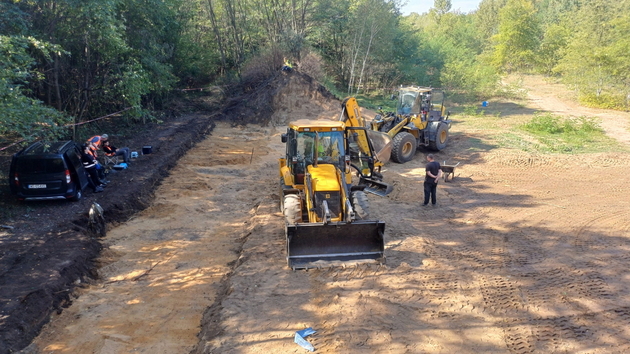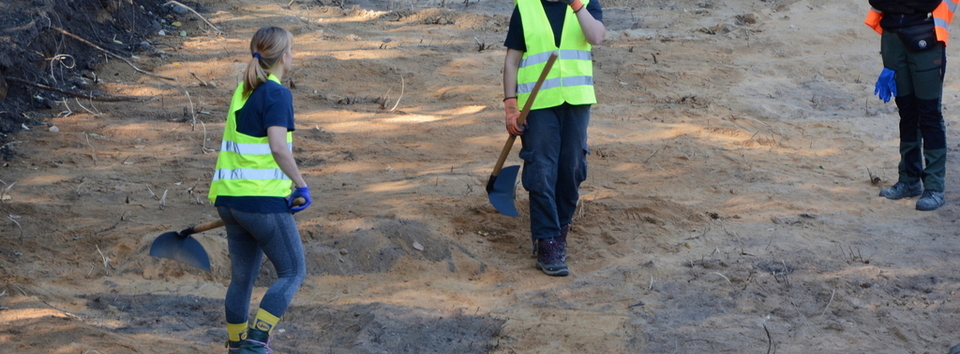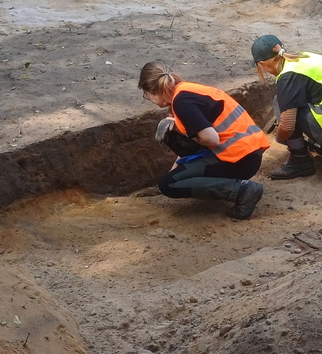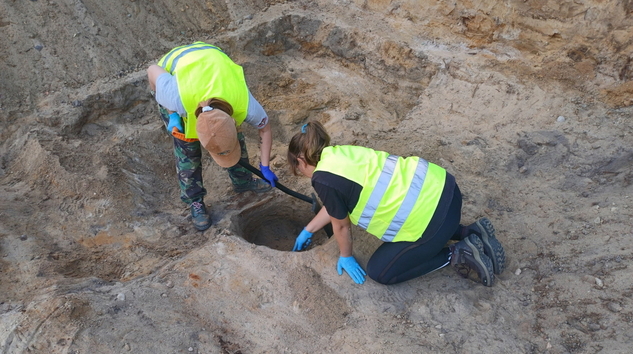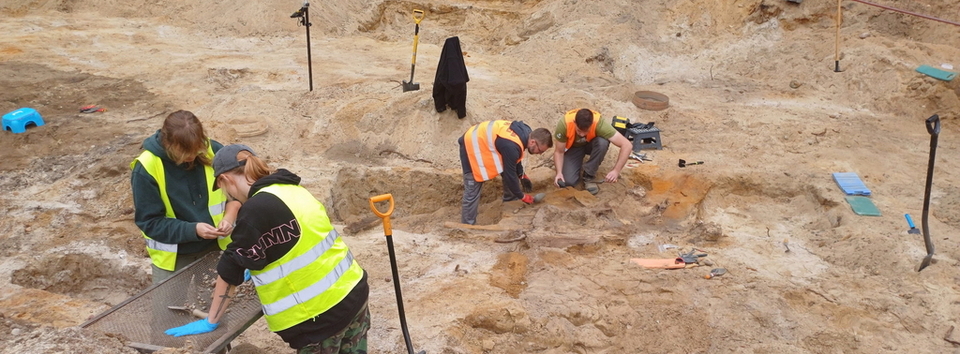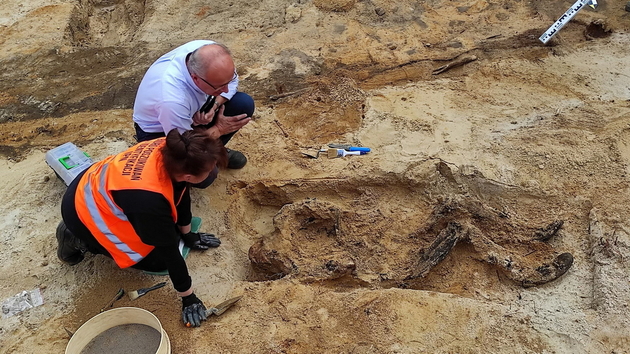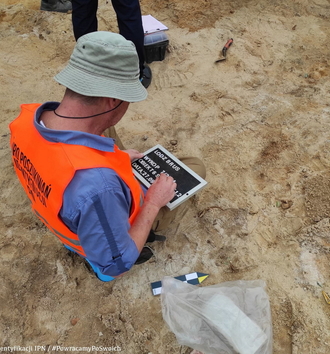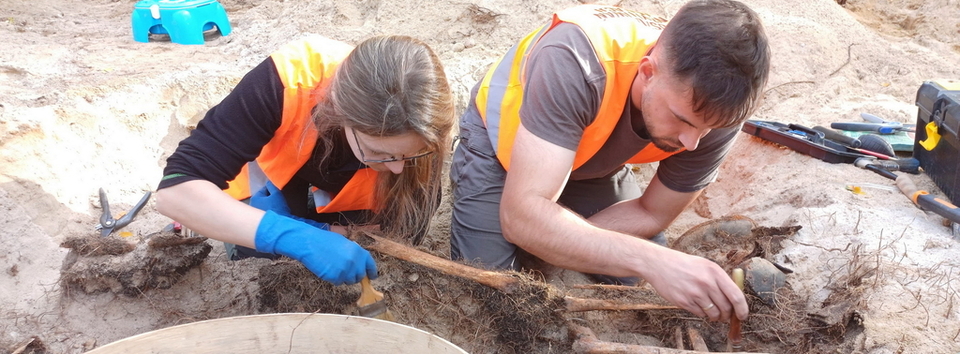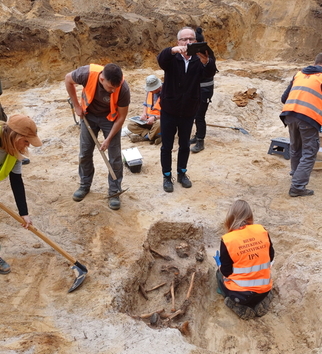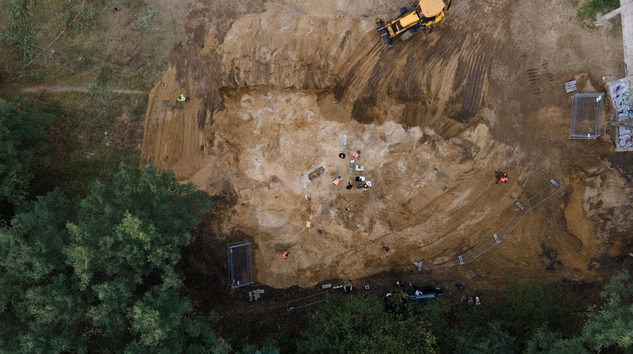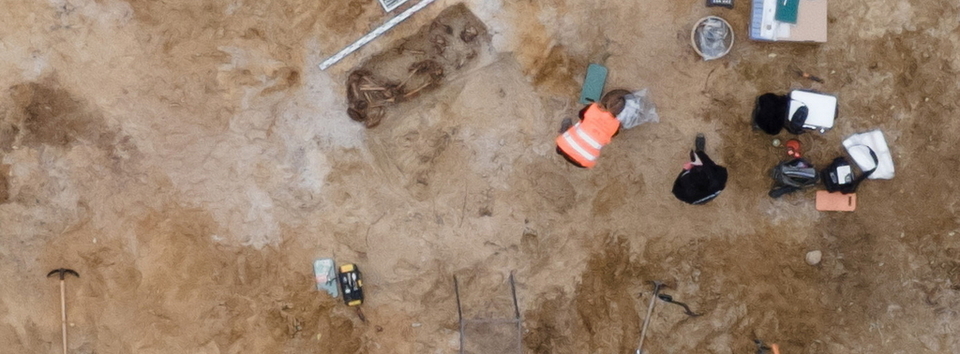The research is being conducted within the area of a large shooting range, expanded in the post-war period, where in 1939-1940 officers of German Nazi armed formations carried out executions and buried the bodies of Polish citizens, including many well-known residents of Lodz. After the war, this area was also used by the communist terror apparatus, where – according to preserved accounts – secret burials of bodies of representatives of the anti-communist underground also took place. It was in this place, based on the verdict of the District Military Court in Lodz, that Stanisław Sojczyński, pseudonym "Warszyc", the legendary commander, Home Army soldier, founder of the Polish Clandestine Army and his five subordinates, were supposedly shot on 19 February 1947.
The current archaeological and exhumation works are a continuation of the research conducted in June of the current year. During the works, burial pits containing the remains of at least 9 people were located. They contained numerous personal items: footwear, remains of clothing, a comb, a toothbrush, dentures, glasses, devotional articles and buttons, including from a Polish, pre-war military coat. The discovered human remains, despite being significantly degraded, create an opportunity to obtain reliable genetic material, which may allow for their identification.
The research has been conducted under the supervision of Dr Tomasz Borkowski from the Office of Search and Identification, Institute of National Remembrance and Dr Krzysztof Latocha (The Office of Search and Identification, Institute of National Remembrance Branch in Lodz) in cooperation with Dr Olgierd Ławrynowicz from the Institute of Archaeology, University of Lodz. The research is also attended by: Dr Michał Nowak, Dr Justyna Karkus, mgr Aleksandra Szafrańska, mgr Róża Dylewska, mgr Krzysztof Mikołajczyk, mgr Krzysztof Wiliński (The Office of Search and Identification, Institute of National Remembrance) and archaeology students from the University of Lodz. The fieldwork is being coordinated on an ongoing basis by Prof. Krzysztof Szwagrzyk, Director of the Office of Search and Identification, Institute of National Remembrance, and consulted with Prof. Marian Głosek, the first researcher of this archaeological site.
The researchers would like to thank the City of Lodz Office for providing the area and helping to organise the work, as well as the soldiers from the 1st Air Cavalry Battalion in Leźnica Wielka for daily sapper and outpatient support.
Source: K. Latocha, O. Ławrynowicz, T. Trzaska
Photos: K. Latocha, O. Ławrynowicz, K. Mikołajczyk

